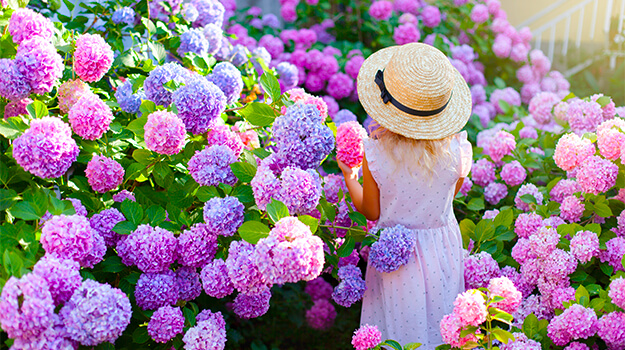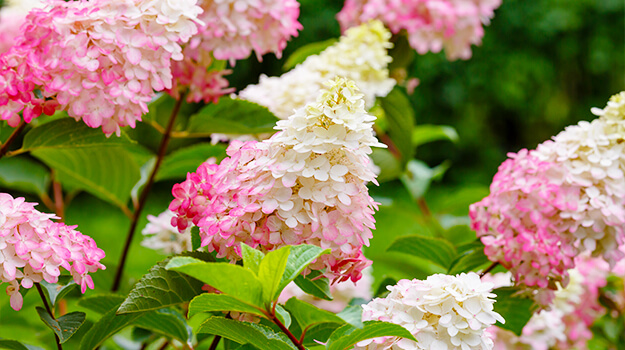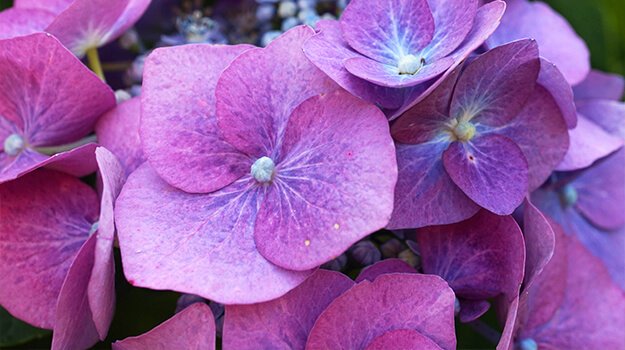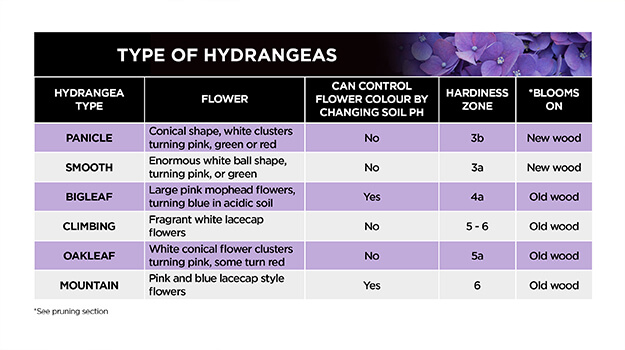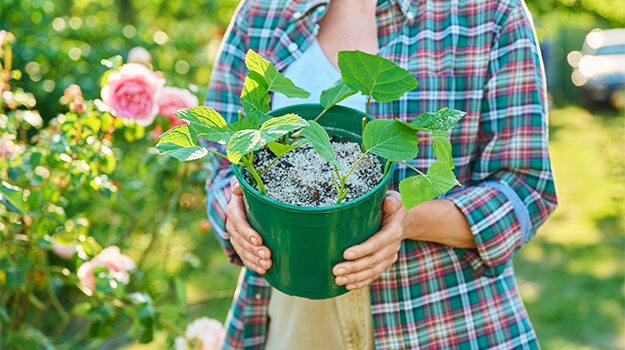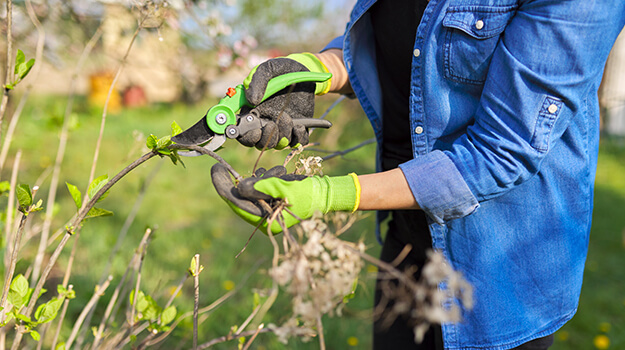Hydrangeas have become one of the most popular flowering shrubs in North American gardens. They are eye-catching, adaptable and quite easy to maintain. Hydrangeas are popular ornamental garden or container plants because of their large flower heads that come in a wide range of colours from shades of pink, purple, lime green and blue.
The benefits of hydrangeas
Consider these qualities, particular to hydrangeas:
- easy to grow and very spectacular
- have large blooms from mid-summer until late fall
- many varieties are cold-hardy, suitable for all regions of Canada
- not prone to insect or disease stresses
- can grow in both sun and shade (minimum 3 sun hours a day)
- can also be grown in pots
- can be easily propagated for subsequent “mini-me” plants
- hardly need pruning
- fall flowers can be left on the plants to decorate your garden all winter
What are the different types of hydrangeas
There are six different types of hydrangeas, but only two are considered hardy enough to survive the cold winter without protection in Canada (zone 3). Others (zones 4-6) may require some winter protection depending on your region. Planting panicle or smooth hydrangeas will guarantee little chance of winter damage.
Most hydrangeas begin to bloom in early to mid-summer, changing flower colours by early fall. Additionally, unlike most other flowering shrubs, you can leave the brown flower heads on all winter, which can add a pleasant feature to your garden.
Hydrangeas come in a wide variety of shapes and sizes. You can get these flowering plants as standard-size shrubs, smaller dwarf varieties, climbing vines or taller tree-like forms.
A mature hydrangea shrub can be as little as 3’ X 3’ or as large as 15’ X 12’. Pick the right size for where these plants will be growing and be sure to read the plant tags when purchasing for size, format and zone.
How to plant and care for hydrangeas?
Plant new shrubs in the early spring or early fall. Fertile, humus-rich and moist soil is best.
- Dig a hole wider than the root ball and amend the soil with peat moss or compost to help retain water as the roots grow out.
- Make sure the top of the root ball is at the surface of your soil, not below.
- For best results, work in MYKE Tree & Shrub.
- Cover the soil with a good layer of mulch.
- Water thoroughly.
Hydrangeas overall prefer sun with partial shade. They might require extra watering if in full sun all day, depending on your soil. Some tips on where not to plant: don’t plant under a tree and avoid windy areas.
Once established, hydrangeas appreciate a spring application of a balanced fertilizer, like 10-10-10. Avoid high nitrogen (1st number on the bag) as this causes more vegetative growth and less blooming potential. Also, once you have applied a general 10-10-10 fertilizer in the spring, you need not fertilize for the rest of the season.
When and how to prune hydrangeas?
Pruning depends on whether or not the hydrangea blooms on new wood or old wood. If blooming is on stems from the previous year, do not prune too much or you’ll lose your flower show the following season.
In general, all old wood plants (bigleaf, oakleaf, climbing or mountain) do not require pruning, except for broken, dead or overgrown branches once a year. If you don’t want to see the old brown flower heads left on for the winter, you can cut them off just below the flower.
If your plant blooms on new wood (panicle or smooth), you can cut down quite a bit and not affect future blooming. You can cut out any wood that you want, as the flowering will occur on new growth the following summer. You can just leave everything as is and never prune.
The beauty of hydrangeas is that you really don’t have to prune at all. If you wish to prune your “new wood” hydrangeas in the fall, you will be looking at sticks all winter. Most people like to leave the spent brown flower heads on for the winter. You can snip those off in the spring.
You need to be patient with hydrangeas as they are often the last to wake from winter dormancy. But on the other hand, they are the last to bloom in the garden!

